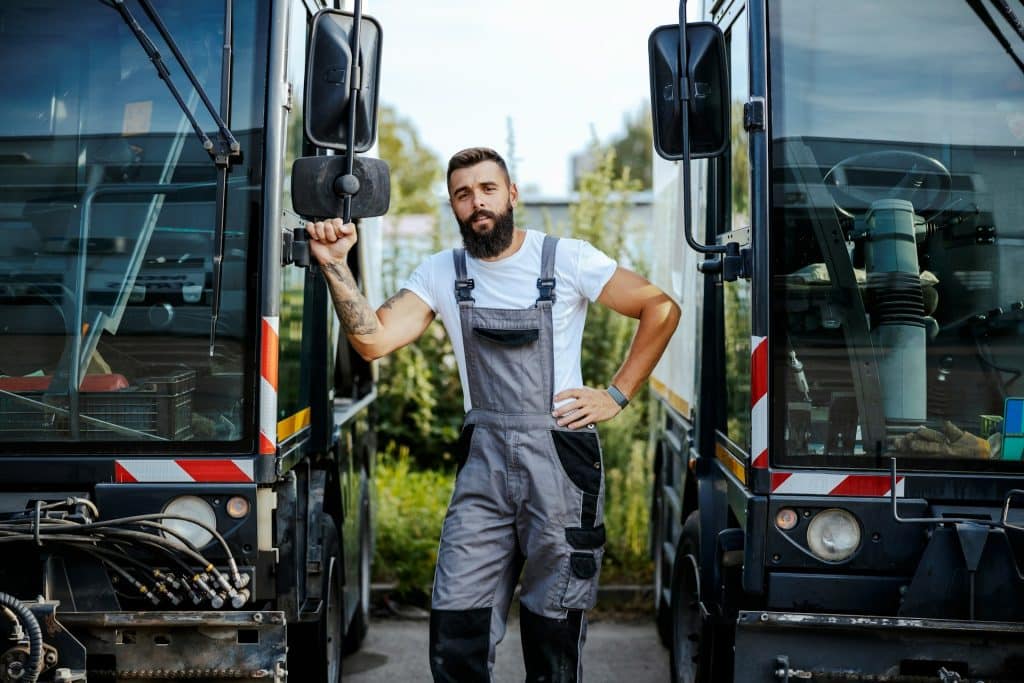Driving a truck for a living means dealing with changing road conditions all year long. Every season brings something different, whether it’s slick roads in winter or high heat in summer. For CDL drivers, staying alert to these changes is part of the job. It can be challenging, especially when you’re hauling loads across long distances and don’t have the time to stop and make adjustments every time the weather shifts.
In Las Vegas, these seasonal challenges can feel even more extreme. The desert climate means hot summers, mild winters, and sudden weather changes during monsoon season. Add in the traffic from year-round tourists, and you’ve got a set of conditions that require drivers to be sharp and prepared. Knowing how to plan around these seasonal patterns can make your job a lot smoother and help you stay safer on the road.
Winter Driving Challenges
Winter in Las Vegas is usually mild, but that doesn’t mean it’s risk-free. Overnight temperatures can drop low enough for frost to form, especially on bridges and overpasses. Rare snowstorms do happen, and when they do, they can throw drivers off since local roads and highways aren’t always prepared for them.
Even if snow and ice aren’t common, the colder weather can still affect your truck’s performance. Tire pressure drops in the cold. Engines take longer to warm up. Windshields fog up at just the wrong time. All these factors can add stress if you’re not ready.
Here are a few tips to stay safe and ready for winter driving:
1. Watch for black ice in the early morning or late at night, mostly on shaded or elevated roadways.
2. Allow extra time to let your truck fully warm up.
3. Check your tire pressure regularly. Cold air can reduce pressure without much warning.
4. Keep a scraper and extra washer fluid in the cab. Morning frost can sneak up on you.
5. Make sure all your lights are working. Days are shorter, and visibility matters more.
Keeping up with vehicle maintenance during the winter is also key. Battery problems are more common in cold months, and nobody wants to deal with a dead battery in the dark. Do a weekly check of everything from your lights to your brakes.
Summer Heat And Maintenance
Las Vegas summers are no joke. The heat can get intense fast, especially when you’re on the road for hours with the sun baking your cab. It’s not just uncomfortable, it can be dangerous for both the driver and the truck.
High heat can lead to tire blowouts if your tires are already worn or overinflated. Engines are at a higher risk of overheating, especially under heavy loads. Drivers also run the risk of heat exhaustion without proper hydration and rest.
If you’re driving during summer months in Las Vegas, here’s what to keep in mind:
1. Check your tires before every shift. Look for worn tread, and don’t forget to check for sidewall cracks.
2. Make sure your radiator is clean and coolant levels are where they should be.
3. Take breaks in shaded areas, and always carry water. A small cooler with extra drinks helps a lot.
4. Plan routes with fuel and rest stops in mind, especially if you’re hauling through the desert.
5. If your AC fails, don’t try to tough it out for hours. Overheating inside the cab can affect your focus and judgment.
One driver we know learned this the hard way. He ignored some minor tire wear signs in June and ended up breaking down right outside of Primm. The heat on that day made a simple flat tire feel 10 times worse. Since then, he’s made tire inspections part of his daily routine. Moments like that are a reminder that staying ahead of maintenance isn’t just about keeping your truck running. It’s about keeping the whole trip smooth and safe.
Monsoon Season Hazards
Las Vegas might be known for dry air and sunny skies, but when the monsoon season rolls through from late summer into early fall, conditions can change fast. These desert storms don’t last long, but they come on quickly and drop a lot of rain in a short time. Street flooding is a big concern, especially in low-lying areas that aren’t built to drain fast. Drivers need to watch for standing water, soft shoulders, and debris washed out onto highways.
The wind can spike during these short storms too. That makes it harder to keep your rig steady, especially if you’re hauling an empty trailer or a light load. Visibility also drops rapidly when the rain hits or if a dust storm sweeps through ahead of the downpour. That’s when it’s easy to miss a turn or get too close to the vehicle in front of you.
Here’s how to stay safe during monsoon season:
1. Check the weather before you head out. Monsoon alerts are usually issued early.
2. Don’t drive through flooded roads. Even shallow water can push a truck off-track.
3. Slow down when the rain starts. Roads get slick quickly after being dry for so long.
4. If caught in strong winds, keep a firm grip on the wheel and stay in your lane.
5. Pull over in a safe area if visibility drops more than you’re comfortable with.
One thing drivers in Las Vegas know is that a desert storm doesn’t give much warning. Sticking to lower speeds, staying alert, and checking over your truck before and after the rain can help prevent getting sidelined by weather that passes just as quickly as it starts.
Traffic And Tourist Season In Las Vegas
If the weather wasn’t enough to deal with, traffic in Las Vegas can be a problem by itself, especially during tourism surges. Events at major venues, holiday weekends, and conventions can crowd the roads in and out of the city. That means longer wait times, tighter delivery windows, and more stress than usual.
Heavy traffic isn’t just about slow pace. It increases the chance of fender benders and sudden braking. Out-of-state visitors aren’t always familiar with local routes either, and their lane changes or last-minute exits can be unpredictable. That can make operating a truck through city routes a lot more complicated.
Some adjustments that can help include:
1. Planning routes to avoid tourist areas during busy times, especially the Strip.
2. Shifting drive times to earlier in the day or later in the evening when roads are quieter.
3. Using alternate routes for pickups and drop-offs when possible.
4. Being extra aware in areas with high foot traffic and pedestrian crossings.
5. Sticking to a stricter speed reduction in high-traffic parts of the city.
Time management becomes a real tool during busy seasons. If you can plan your schedule around the major traffic jams, you’re already saving yourself a lot of trouble. Even local drivers try to avoid certain areas depending on the time of year. Truckers who know the patterns can stay one step ahead and save fuel, time, and frustration.
Getting Season-Smart Before You Hit the Road
Being a CDL driver in Las Vegas means more than just knowing how to maneuver a truck. It’s also about reading the road, the sky, and knowing how busy the city might be depending on the calendar. Each season asks for a different approach, and being ready for it all can make a big difference, whether you’re brand new or have been behind the wheel awhile.
Understanding how each season affects the roads around Las Vegas doesn’t just help with smoother trips. It builds better habits that stay with you. When you’re aware of patterns like summer overheating or the tourist surge around New Year’s, you’re less likely to get caught off guard. That kind of experience helps keep drivers and their cargo safe and on time.
Ready to take on the challenges of every season as a skilled truck driver? Explore the comprehensive training programs at RTDS Trucking School to gain the experience and confidence needed to handle the demands of CDL in Las Vegas. Let us help you prepare for everything the road throws your way so you can drive with peace of mind.

